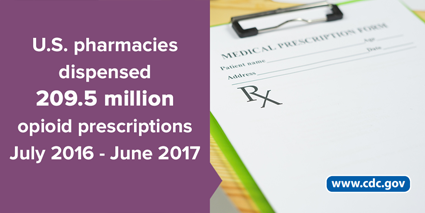Opioid Prescribers in the U.S.
Opioid prescribing remains high and varies widely by speciality, according to a new study, Opioid Prescribing by Specialty and Volume in the U.S. in the American Journal of Preventive Medicine. A total of 209.5 million opioid prescriptions were dispensed in the U.S. from July 1, 2016 to June 30, 2017. The most common opioid prescribers were family medicine, internal medicine, nurse practitioners, physician assistant, pain medicine, and dentist.
While opioid prescribing remains high and varies widely by prescriber specialty, the findings in this study highlight the important insights into opioid prescribing in the U.S.
Key Findings
- The specialty groups accounting for the greatest proportion of opioid prescriptions were:
- Family Medicine- 20.5%
- Internal Medicine- 15.7%
- Nurse Practitioners- 9.9%
- Physician Assistant-9.3%
- Pain Medicine- 8.9%
- Dentist 8.6%
- Average number of opioid prescriptions written per prescriber was 215.8, with the highest among pain medicine (1,314.9) and physical medicine and rehabilitation (1,023.1) specialty groups, followed by orthopedics (438.7) and family medicine (428.4).
- Primary care physicians accounted for 35.8% of all prescriptions, non-physician prescribers accounted for 19.2%, and pain medicine specialists accounted for 8.9%.
- The proportion of opioids prescribed by physician assistants and nurse practitioners has increased since 2012 and is expected to continue to rise given their increased role in the healthcare system

Learn More





















.png)









No hay comentarios:
Publicar un comentario